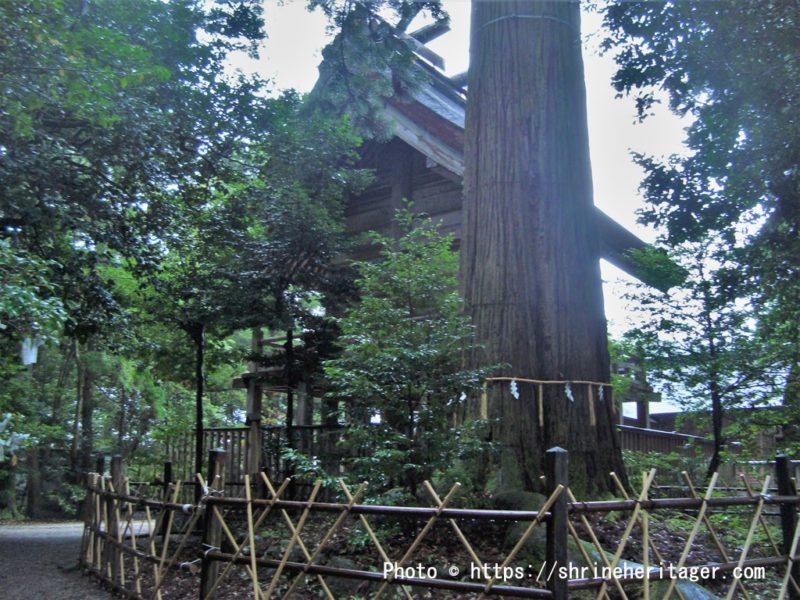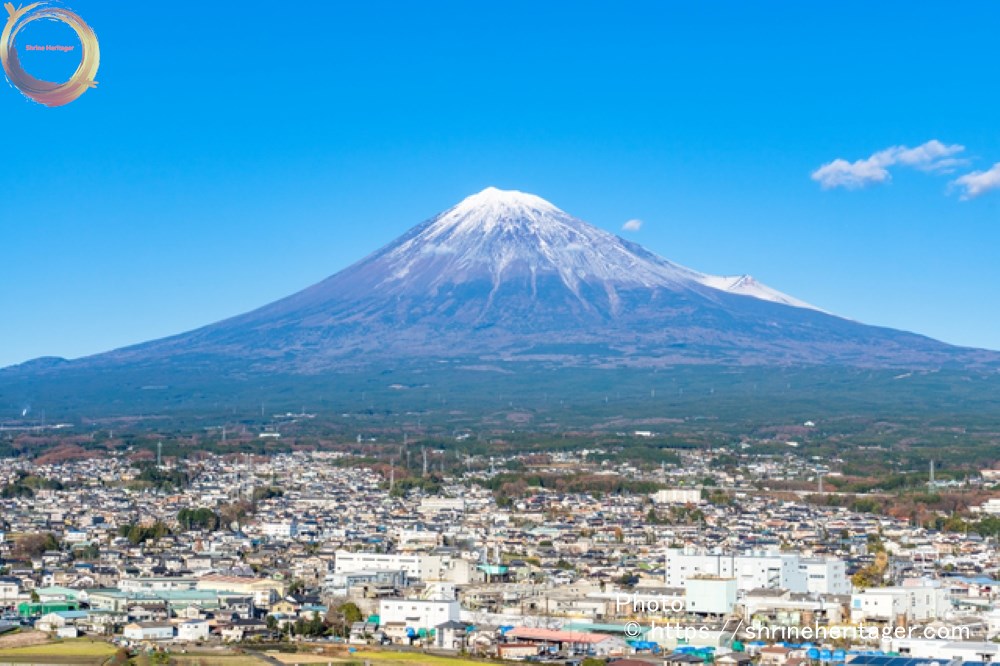Susa Shrine (Sada-cho) is said to be the "land of the end" and "the sacred place of the soul requiem" of Susanoo no mikoto, and it is said that "Izumo Kuni Fudoki (izumo no Kuni fudoki) In the article of Susago, "This country is a small but good country, so my name is not attached to trees or stones, I attach it to the land" and the soul of life (mi tama) It's written that it was put down here and paid, and it's definitely a historic shrine in Japan.
目次
- 1 [About 1,300 years ago] About 1300 Years ago
- 2 [About 1100 years ago] About 1100 Years ago
- 3 【Current】 At the Moment
- 4 【Visit to the shrine】 (Pray at the shrinee)
- 5 【Tradition of shrines】 (Old tales held down to shrinks)
From here, I will explain the name of the listed shrine in chronological order.
"Izumo Kuni Fudoki" was completed on February 30, 1300 years ago and 5 years ago (733).
Next, the Enki-shiki Shinmei book was completed about 1100 years ago in the middle of the Heian period (extended 5 years and 927 years).
Finally, it is the ronsha (present shrine) of "Izumo Kuni Fudoki" and "Enki-shiki Shinmeisho"
[About 1,300 years ago] About 1300 Years ago
[Izumo Kuni Fudoki (izumo no kuni fudoki) Place of publication]
The shrine record was completed in February 733 AD.
[Country] Izumokuni (izumo no kuni)
[County] Iiishi-gun (iiishi no kaori) Article
Jinjo-gensha (jingikan no yashiro)
【Company name】 Susasha
[Reading] (Sushi no
Yashiro)[How to read] (susa no) yashiro
A copy of the "IzumoKuni Fudoki" digital archive of the National Archives of Japan
https://www.digital.archives.go.jp/DAS/meta/listPhoto?LANG=default&BID=F1000000000000003351&ID=&TYPE=&NO=画像利用
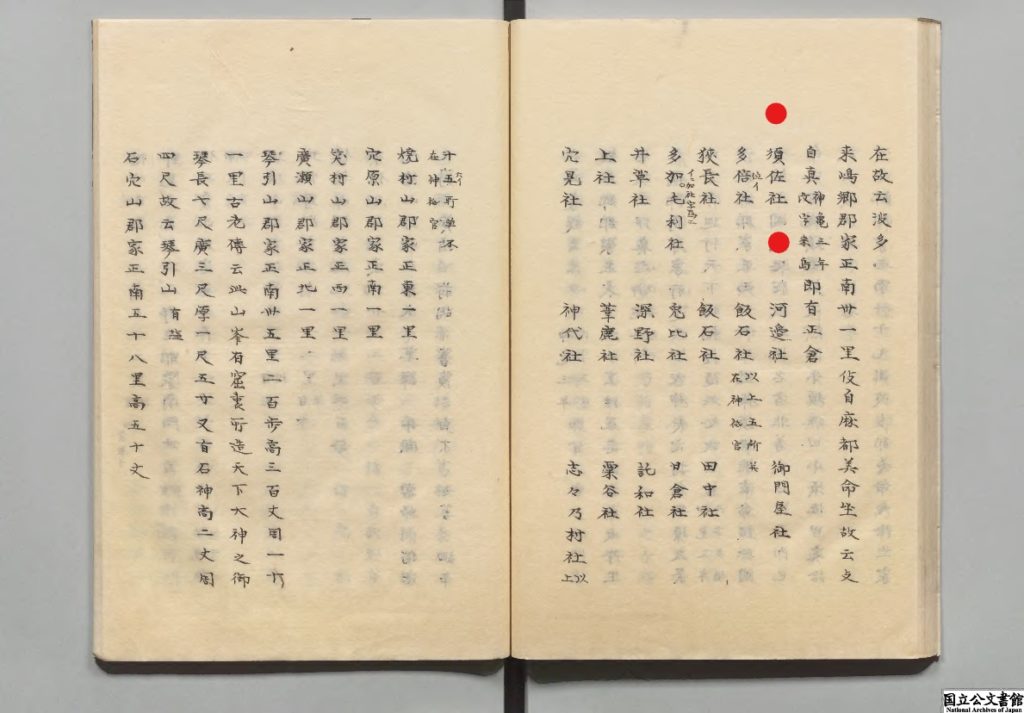
スポンサーリンク
[About 1100 years ago] About 1100 Years ago
[Engishiki Jimmeicho (Place of publication)]
The shrine record was completed in December 927 AD.
[Country] Izumo Kuni (izumo no
kuni)[County] Iiishi-gun (iishi no kaori)
【Company name】 Susa Shrine
[Reading] (How
toread] (susa no kami no yashiro)
https://dl.ndl.go.jp/info:ndljp/pid/1442211/160画像利用
国立国会図書館デジタルコレクション National Diet Library Digital Collection Enki Shiki: Revised Edition. 上巻(昭和4至7)Volume 1 (Showa 4-7)

スポンサーリンク
【Current】 At the Moment
[Ronsha] Current specific shrine
[Shrine name] (shrine name) Susa Shrine (susa shrine)
[how to read] (How to read) (Susa Zinja)
[Common name] (Common name) Susa Omiya (susa no omiya)
[Jinzachi] (location) Susa, Sadamachi, Izumo City, Shimane 730
【地 図】(Google Map)
【Festival God】 (God's name to pray)
"Lord" Susanoo no Mikoto
(Mikoto Susa
no)"Inatahime no Mikoto"
(Mikoto Inatahime)
"Toe" Toshima Tomei (ashinazuchi no mikoto)
(Mikoto Ashinazuchi)
"Hande" Tema Tomei (tenazuchi no mikoto)
(Mikoto of Tezuchi) (The God of the Susa Family)
[Gody] (God's Great Power)
Home safety Safe and stable home life
Body healthy Strong and healthy body
Prayer at an age contained a lesson in life
Traffic safety Traffic
Healing healing healing Healing of disease
・心願成就 Realization of wish of heart
Good luck and happiness
Business prosperity Wishing business prosperity
Great catch satisfaction Good harvest and big catch
・海上安全 Maritime safety
・五穀豊穣 Pray for good harvest
Cow and horse safety and health
New Year's visit Baby prays at shrine for the first time
Shichigosan 7 year old 5 year old 3 year old celebration
・合格祈願 Prayer for passing the exam
Entrance admission dedication report admission to school
Academic achievement Want to acquire knowledge and skills
Adult dedication Report of becoming an adult
Children will be born as desired child
Prayer for safe delivery Healthy childirtth
・良縁祈願 A desire to deepen connections and intimacy with good people
Various wish fulfillment Realization of variance wishes
etc etc
【格式】 (Rules of dignity)
Enki Shikinaisha (engishikinaisha)
【創建】 (Beginning of History)
Jindai
Shrinks are very old, from the days when the gods durable
And the Death Is Still Going on
【由緒】 (history)
It is said that it was enshrined in Mt. Miyao in the north in old times, and it was transferred to the present place in tencho period (824-834).
It is the shrine of the clan god of "Susa clan" in the main shrine of "Susanoo no mikoto".
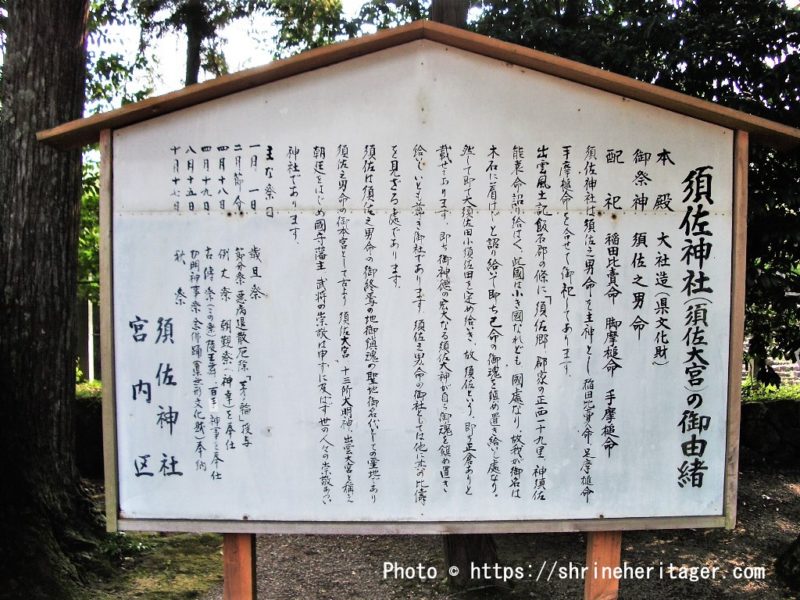
In the old days, The Village of Susa was a mountain that grew, and it was only a cold village with a cat's forehead arable place in the river.
It is seen in the old book that Susanoo's life pioneered the country, it came to the land of Susa, it was done, and the last national land management was done, and "This country becomes a small and both good country, and my name is not put on the plant, and it puts it on the land without putting my name on the plant" and it is said in the old book that It is Susana because it was decided.
More than 2,000 years have passed since life was ended here, and his divine virtues have flourished to this day, and the descendants have flourished with their livelihoods.
The degree of the god virtue is done by the one which prays for the healing of various trouble retreat diseases, the 恢 of the mental confusion, and the nature which comes as land continuation comparatively without the inconvenience of the traffic though it depends on the favor of The Great God, and the success of agriculture, the safety of the traffic, the development of the animal husbandry, the prosperity of the descendant, and the connection of the good relation are prayed for the healing of various troubles and retreat diseases.
To spare, Because Susa's Omiya was a place of the swallowing at all costs, negotiation with the center, little contact, it is not known that it must be known, and the thing to be honored changes as it is,
It is clear even if it illuminates various events that a sufficient treatment was never done compared with the shrine of the other country and the Susa kunizo family even if the reverence of the national guard was obtained in the age, and it is a place where it is thought that it is equally regrettable of the later person.
To add to the Susa family, it was 1800 years ago (160) in the 30th year of Emperor Seiji at the time of the 24th Masusei Giuji that the Susa Omiya family was successful in land development and was the descendant of the national god.
He claimed to be Taro Izumo and Jiro Izumo, but he has been in his 78th and 2640 years as Untaro and Unjiro in the generations, except for the characters that came out only to Kuniji Izumo (1434). Mr. Kenji is now Untaro.
Susa's last name was given at the beginning of the Meiji era, and until then, he had always called himself Susa Kunizo.
「全国神社祭祀祭礼総合調査(平成7年)」[神社本庁]から参照
The system of the national construction was abolished at the time of the reform of the large size, but only the national construction of Izumo, Kii, Aso, and Owari is left, and the name is existing.
【境内社】(Other Deities within the preciscants)
Amaterasusha "Lord" Amaterasu Ogami (amaterasu omi)
Inarisha "Lord" Inakura Tamamei (ukanomitama no mikoto)
Mihosha "Lord" Mihotsu Himemei (mihotsuhime no mikoto), the main life of the affair
Tosuesha "Lord" Tenho Himei, Tenninho Ear Life, Tianjin Hikone Mei, Katsutsu Hikone Mei
Nishisuesha "Lord" Kumano 櫲, Ichikijima Himemei, Tashin Himemei, 湍 Himemei
Sui Jinmon "Lord" Toyokuma Togami, Kushikuma Togami
[Sakaigaisha] (Shrine is off site)
Kuwashima Shrine "Lord" Tashin Himemei, Ichikijima Himemei, 湍 Himemei
"Kawabe-sha of Izumo Kuni Fudoki"
Suga Shrine "Lord" Soto Soson
[Otaky Point] (Points Selected by Japan Otaku)
「七不思議」境内の案内には 須佐の七不思議とあります
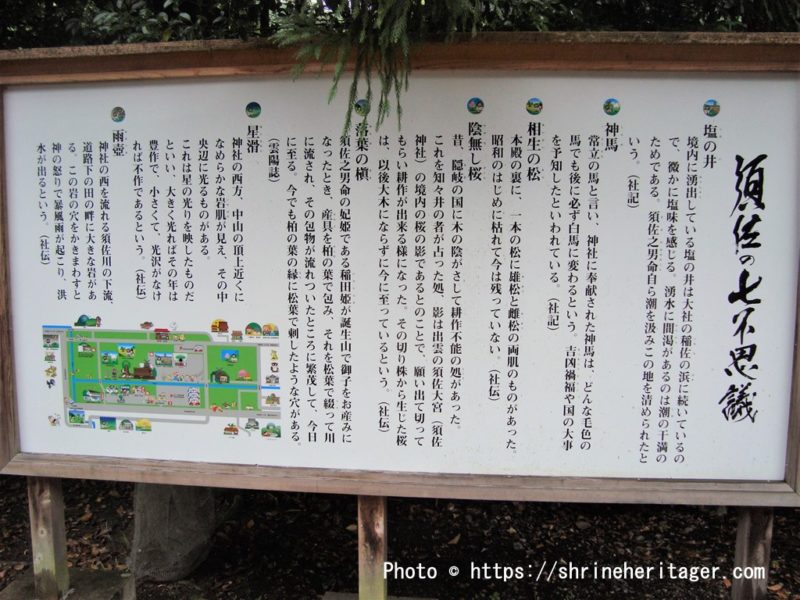
Shionoi (shio no i)
Shionoi (shio no i) that springs out in front of the head office is following the beach of Inasa of Izumo Taisha, so I feel a little salty at high tide when the tide is transmitted to the ground near the top.
Susanoo no mikoto draws the tide himself and cleanses this place.
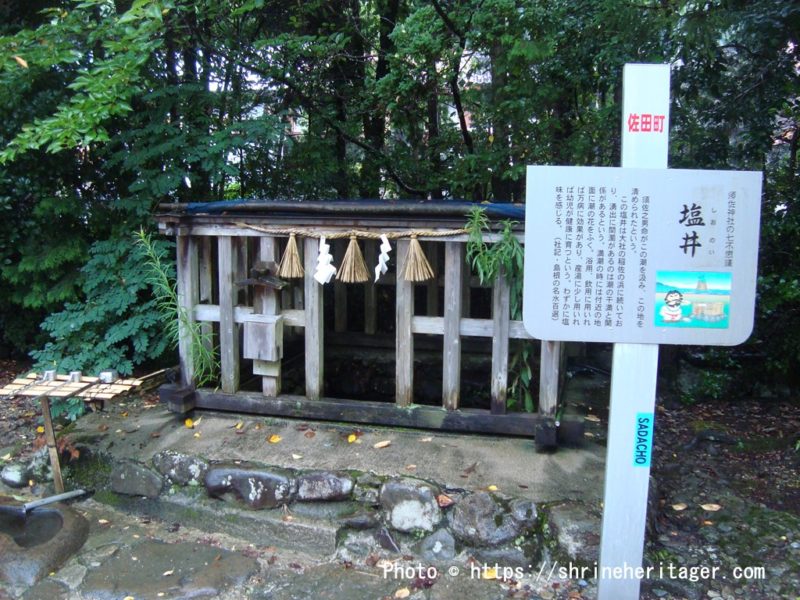
Aioi pine (aioi no matsu)
On the back of the main shrine, there was a pine tree with both male pine and female pine skin, but this large tree withered at the beginning of the Showa era, and now a replacement pine tree is planted.
Kamima (shimme)
It is said that the horse of the standing standing and the important of the good luck and the country were foreseen that any hairy horse would surely change to a white horse after any hairy horse though it was usual to dedicate the horse to the shrine in the past (now none)
Fallen leaves (uchiba no maki)
When the princess god of "Susanoo no mikoto" gave birth to her child at Mt. Inashikoyama (birth mountain), she wrapped the maternity equipment with the leaves of the rose and poured it in the river, and the pine tree was still grown in the place where the package flowed. It is said that there is a hole like the stick with the pine needle on the edge of the leaf of the persimmon.
This ancient affair became the sacred crest "Vine", of Susa Shrine after posterity, and the vine seems to have patterned the pine needles, and it is assumed that it is the origin of the family crest of the Susa family.
Shadowless cherry blossoms (kaagenashi sakura)
A long time ago, in the land of Oki, the sun was covered and the poor work of the koda continued.
"The big cherry blossoms of Susa Omiya in Izumo are flourishing, and there is a poor work of koda in order to shade Oki, and it is good if it crosses to Izumo early, and it asks The Kokuzo of Susan, and the cherry tree is cut by saying that the cherry tree was cut.
But since then, when the bud comes out of the stump and the flower finally comes to bloom, it dies again, and it does not wither, and it has reached today.
I'm sure you said that's about the prayer of the five grains.
Star slide (hoshi namera)
West of the shrine Near the top of the Nakayama in Susa, there is an exposure of rock, a smooth rock surface is visible, and there is something shining in the center, and it is said that this is the one reflecting the light of the star, and if it shines greatly, it is said that the year is a rich year, it is small, and if there is no gloss, it is transmitted that it is poor.
Rain pot (ama tsubo)
Downstream of Susagawa flowing to the west of the shrine There is a big rock on the banks of the rice field below the road below its Itsukushima Shrine, which is said to cause floods in touch with the wrath of Susa-Ogami if you stir a hole in the rock where the lawn grows with a diameter of 2 shaku (70 cm) in it.
In fact, it is reported that there is a fact that this was actually committed, it became a storm the next day, floods went out, the anger of the villagers, and was expelled from the village.
スポンサーリンク
【Visit to the shrine】 (Pray at the shrinee)
About 28km to Tachikuekyo via R184 from Hikawa IC on San'in Road to Jr Izumo City Station About 35 minutes
About 16km from Izumo and K.I. on The Asayama Road 25 minutes by car
When you cross Susa- sagawa, you sit there.
The parking lot is next to the precincts at the end of the torii gate.
Arrived at "Susa Shrine"
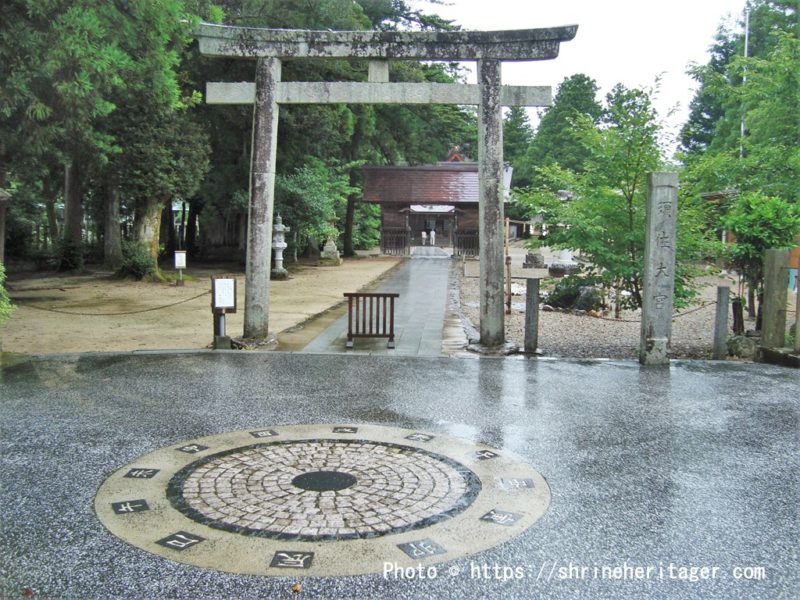
In front of the torii gate, for some reason, the "compass" is embedded in the road, so you can see which direction the company is located and how it is located.
There is a company name mark beside the torii gate, and it is engraved with "Susa Omiya".
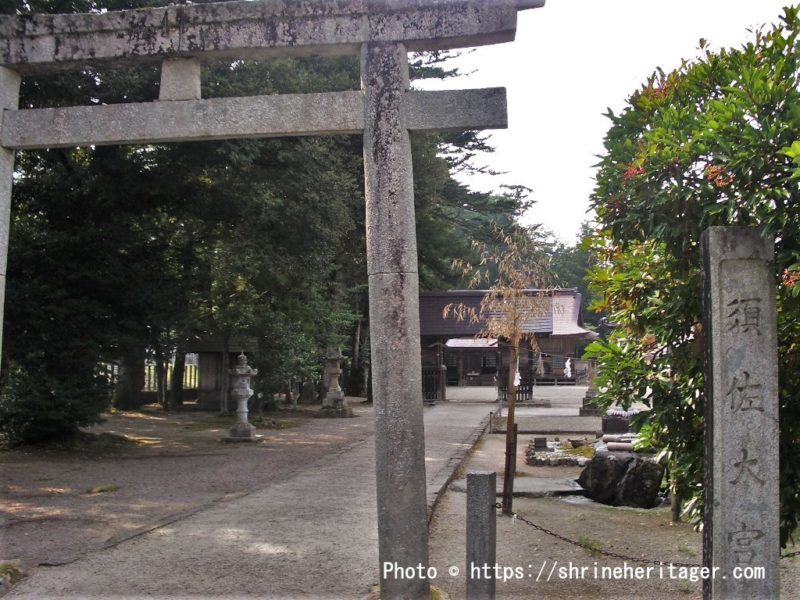
After the bow, we went through the torii gate.
Direction The stone-paved approach extends straight in the dry (northwest direction)
There is a "rock water bowl" on the right hand side, and it cleanses.
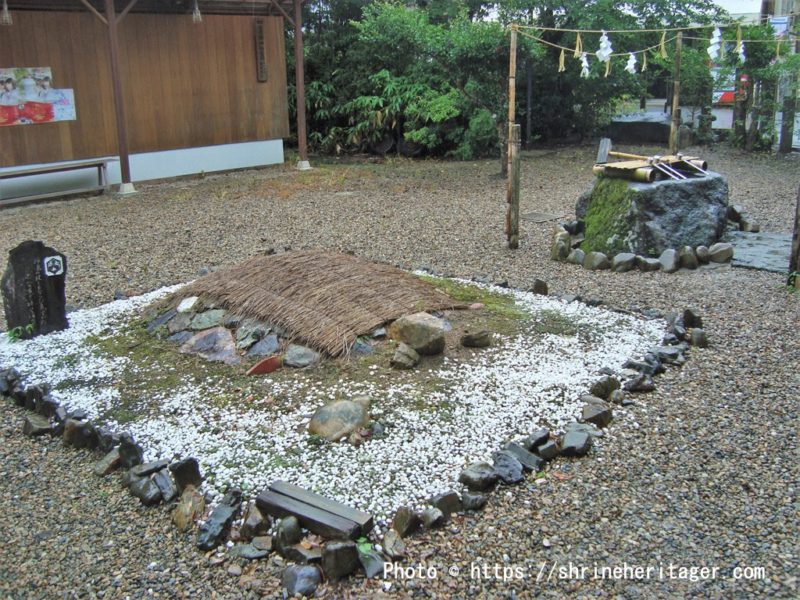
If you go along the stone-paved approach, you will see "Worship Hall" in front of you when you go through the pilgrimage gate and go through the shrine with the "Lord Suijinmon" Toyokuma Togami and Kushikuma Togami.
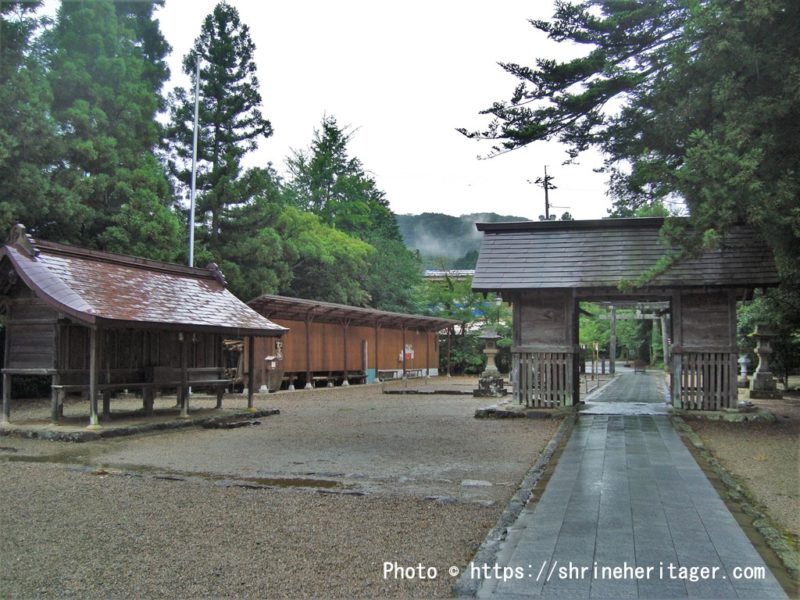
"Worship hall and main shrine" is built in the direction of the direction of the direction (tatsumi) (southeast direction)
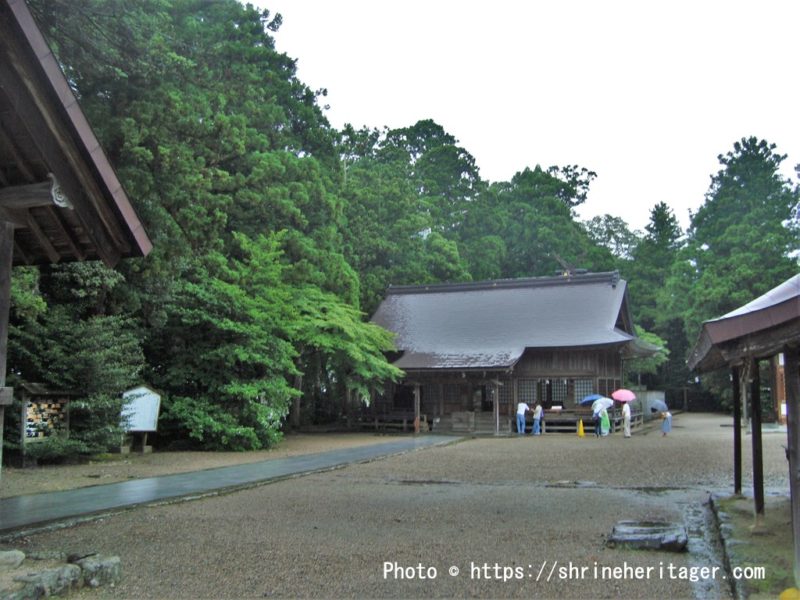
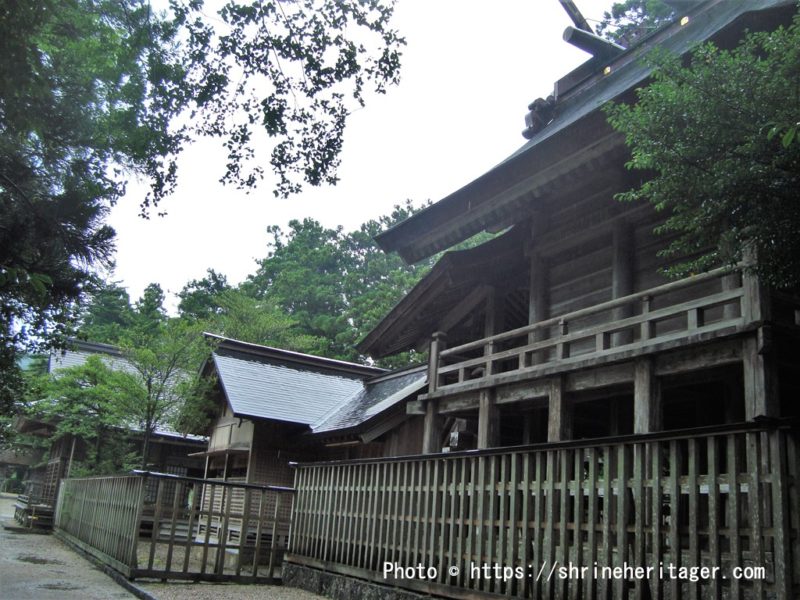
Go to the shrine.
I'm sing a
lot of money. I wish you all the best. I pray with my hands together while praying that I will be able to reach the enshrined god who calms down the Izumo-kuni and will be able to live up to the god of god.
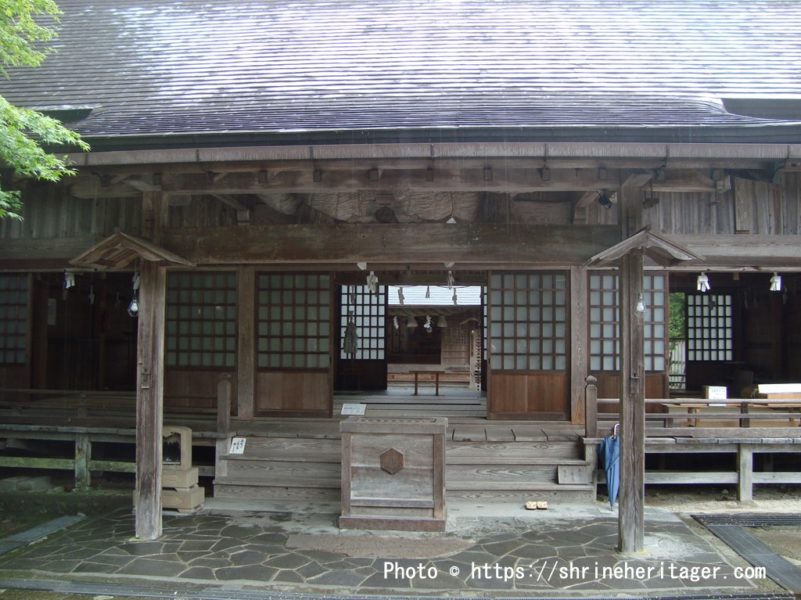
In the rear is a splendid main shrine built by Taisha.
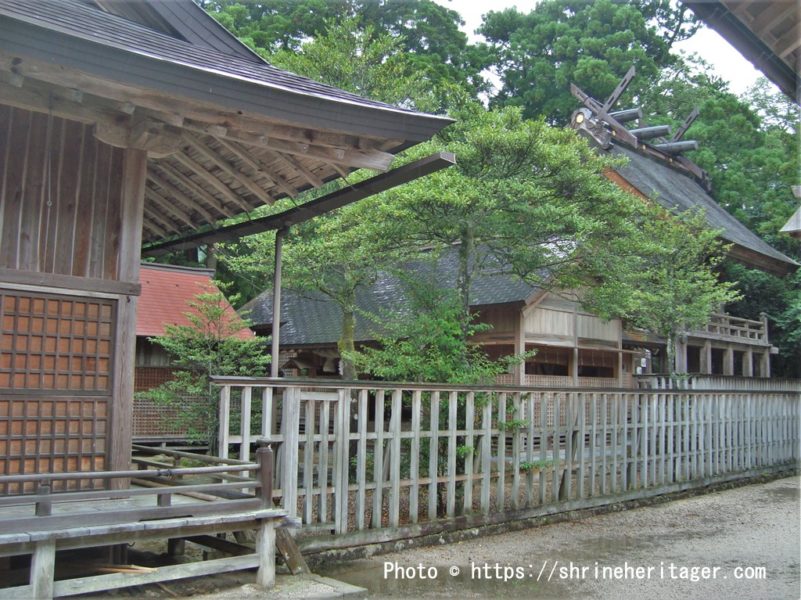
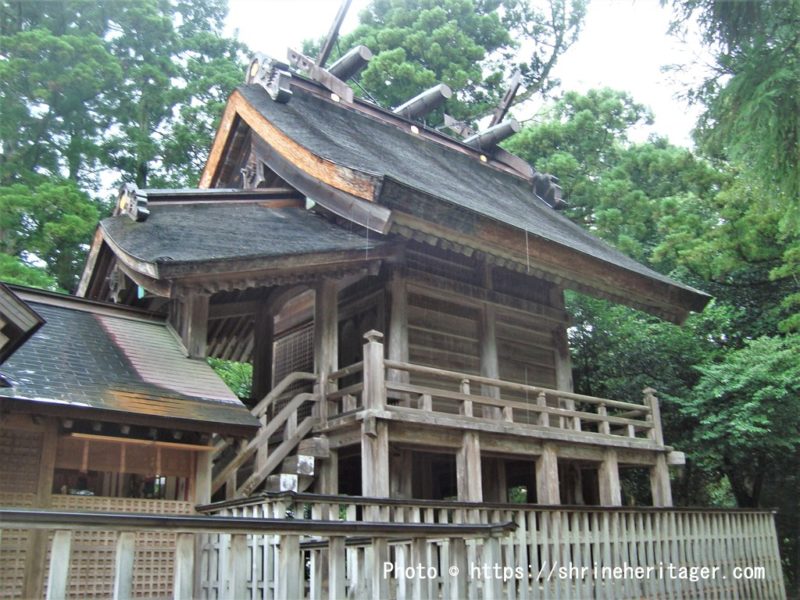
Then, it is a visit to the precinct shrine.
"Onita with a god crest" which was once in the shrine hall
On the right, along with "Office" and "Inarisha"

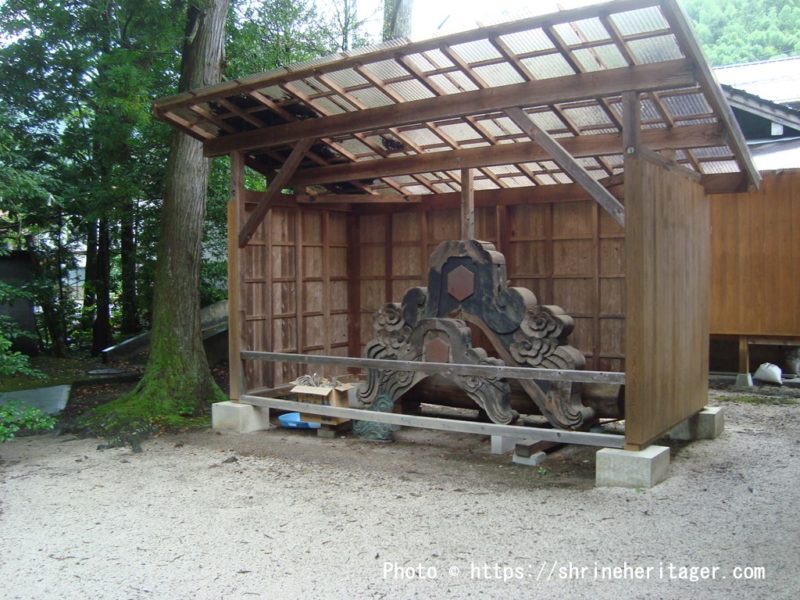
"Osugi" and "Aioi no matsu" in the back of "Gohonden"
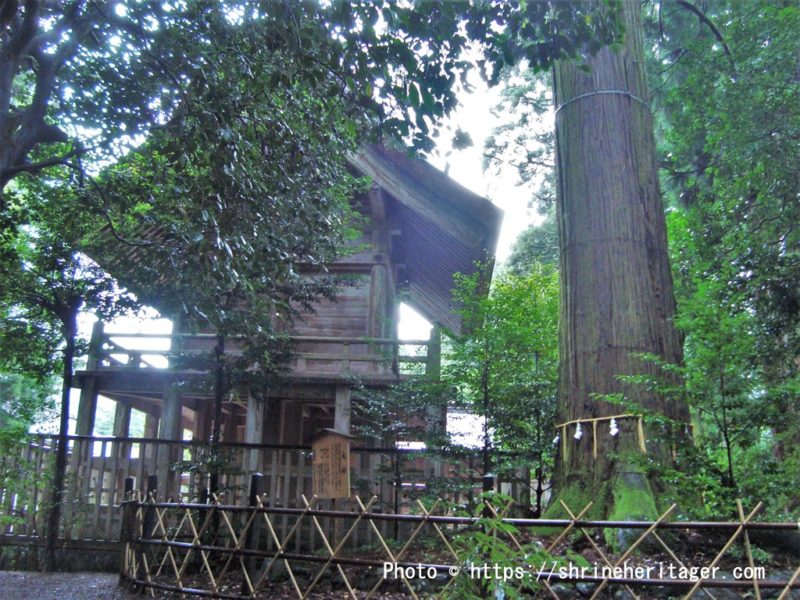
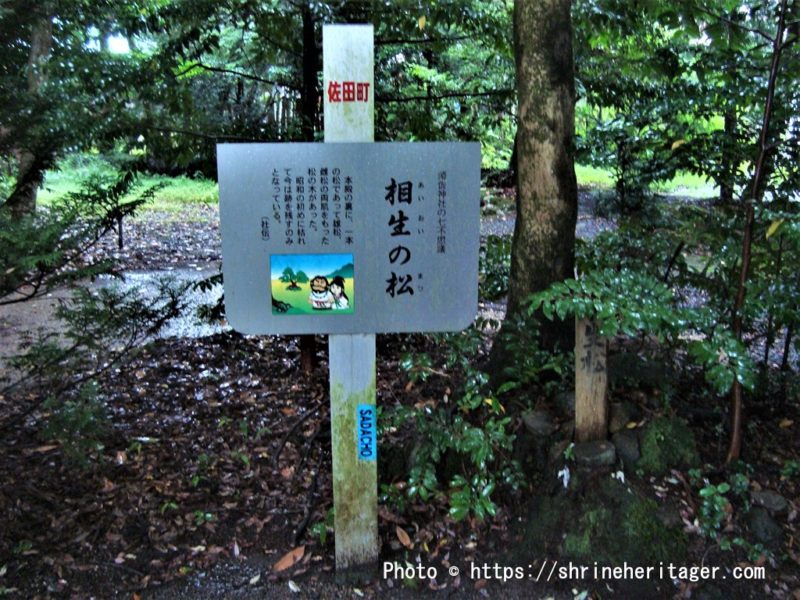
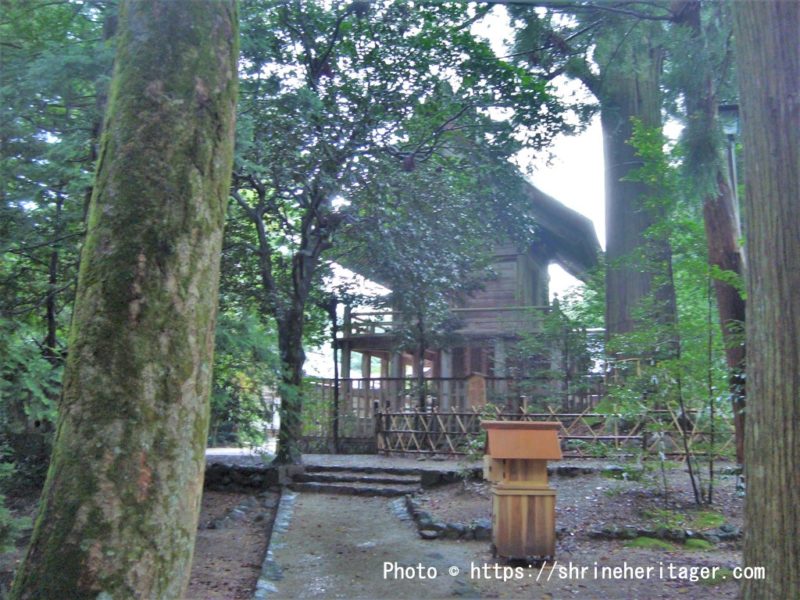
There is "Mihosha "Main" Mihotsu Himemei (mihotsumi no mikoto) and the head of the affairs" of another name "Shimo-gozen" This is built in the direction of the same direction (tatsumi) (southeast direction) as the head office hall
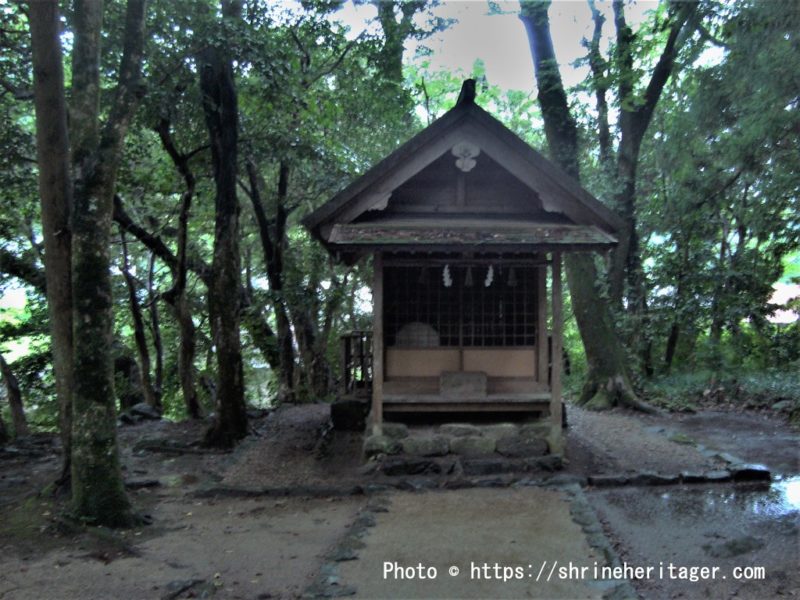
When you return to the front of the shrine, there are "Tosuesha" and "Nishisuesha" on the left and right sides of the approach, and each of them faces across the approach.
"Tosuesha" is located in the direction of kimon (艮=ushitora) (northeast direction)
"Nishisuesha" is located in ura kimon direction (hitoji saru) (southwest direction) and is built.
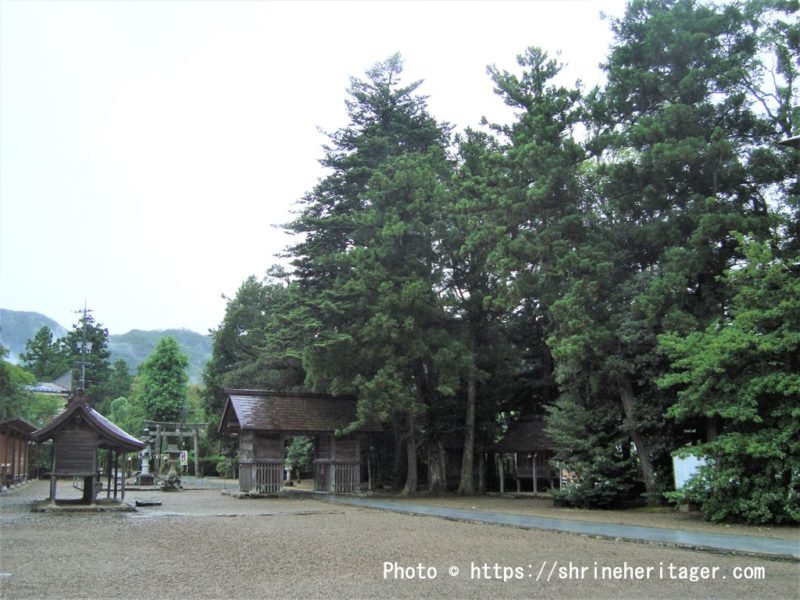
Back on the approach to the gate, face the front of the precincts at the end of the torii gate, and there is "Amaterasusha" called "Gozen above" facing the head office, and it is built in the direction of inui (northwest direction) toward the head office.
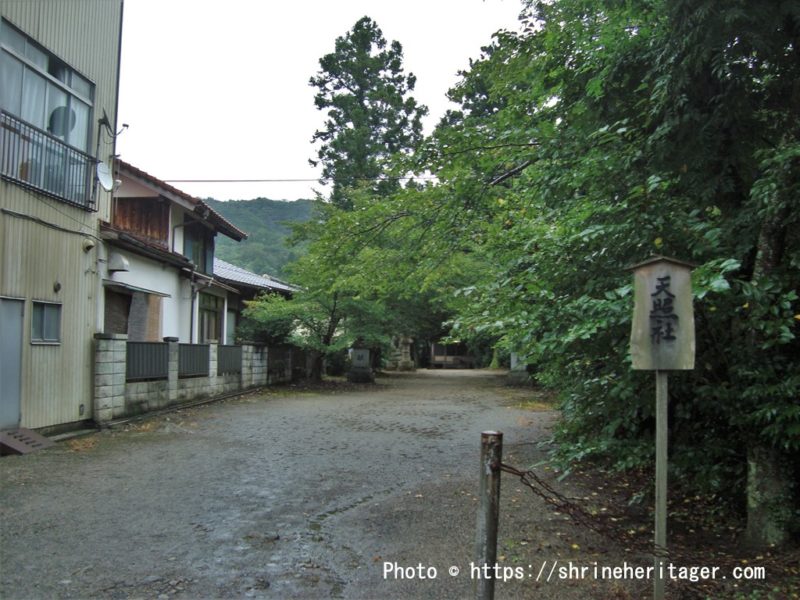
Behind "Tosuesha" is shionoi (shio no i), one of the seven wonders.
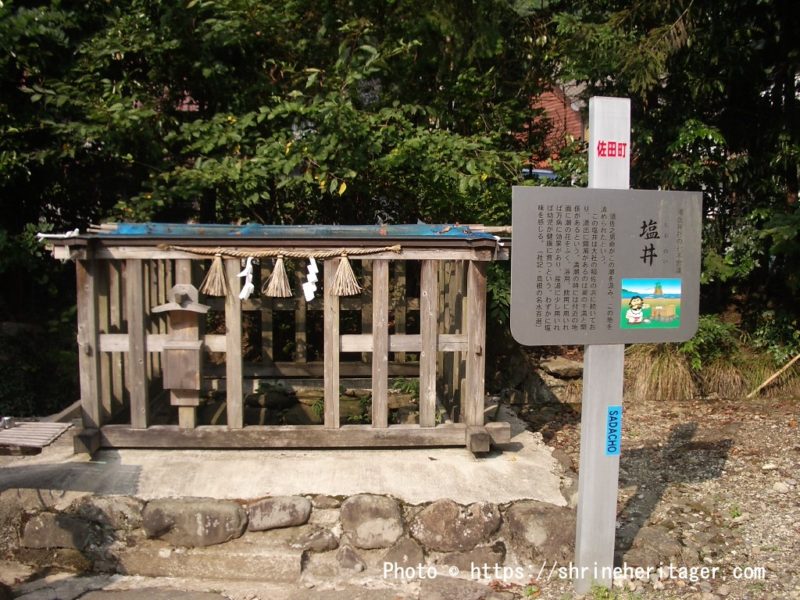
I didn't notice it at all, but it was surrounded by the shrine in the precincts from all sides, and in the center of the shrine, "Sando" and "Suijinmon" passed through, and it passed through here and it was visiting the god of worship.
I'm convinced that the arrangement of this precinct is probably something that is calculated.
Return the approach, pass through the Sui Jinmon Gate, go through the torii gate, and bow.
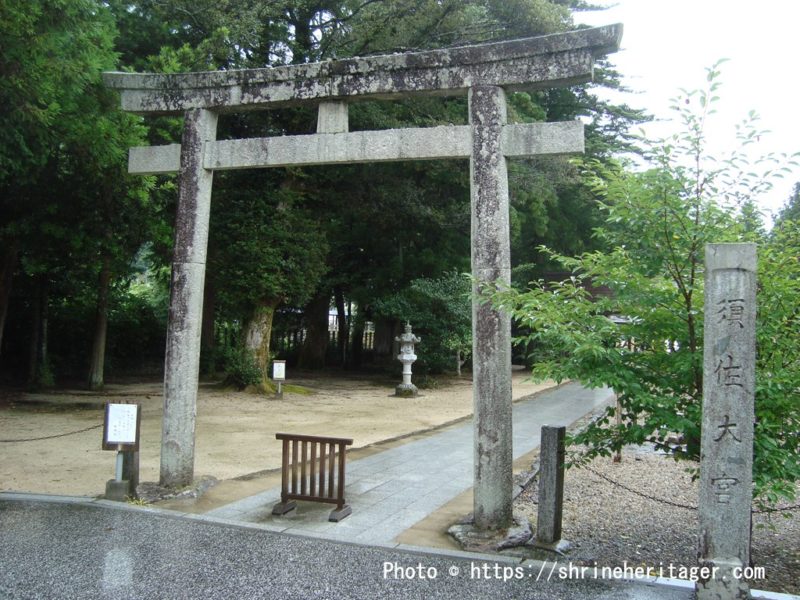
スポンサーリンク
【Tradition of shrines】 (Old tales held down to shrinks)
「須佐之男命(susanoo no mikoto)の御終焉の地」「御魂鎮めの霊地」とは
"Izumo Kuni Fudoki (izumo no kuni fudoki)" in the article of Susa-go as follows
[Original]
"Susago Koriya Shonishi Ichijukuri. There are Kamisusano inn's death, this country雖 Oguni, 處 country. The late Gingye, a non-wooded stone. The soul of the life of the samurai, and the requiem. In the immediate ness, Osusada and Osusada Sadaso. The late Susan. Immediately Arimasakura. 』
(Translation)
Susa-go is located in 19 west villages of the County Family.
Kan susanoo no mikoto said, "This country is small, but it's a good country, so I'll put my name on the land without a tree or stone."
The soul of life was subdued here.
And, there is Masakura in this village called "Susa" because it was decided "Ousada" and "o susada" was decided.
A copy of the "IzumoKuni Fudoki" digital archive of the National Archives of Japan
https://www.digital.archives.go.jp/DAS/meta/listPhoto?LANG=default&BID=F1000000000000003351&ID=&TYPE=&NO=画像利用
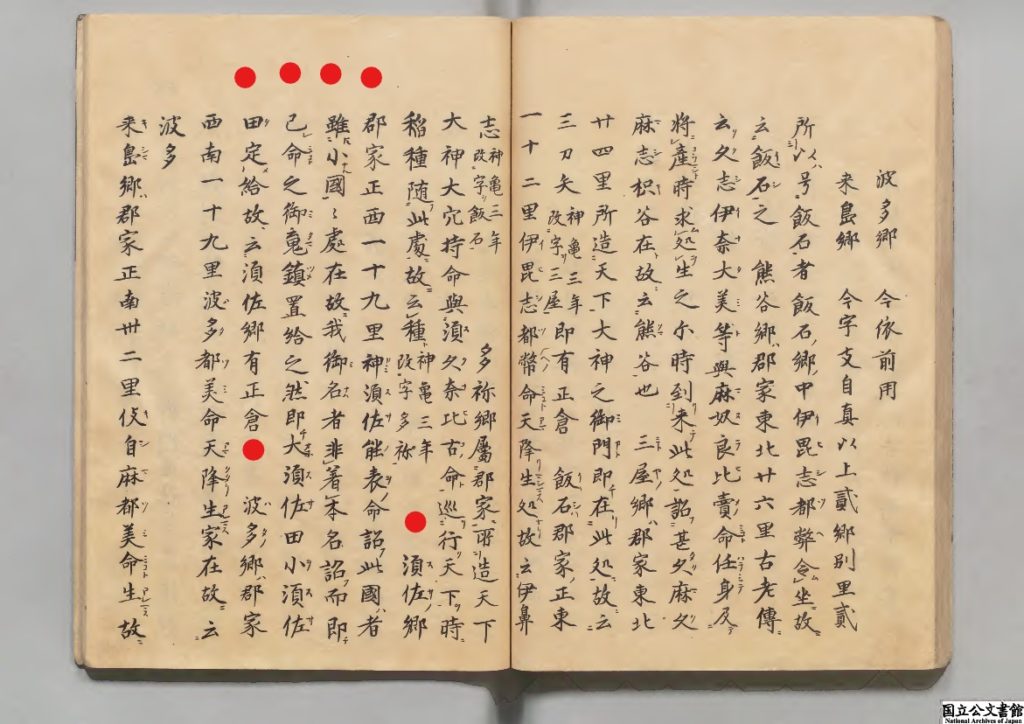
There is a similar tradition in the shrine's company biography.
In the old days, The Village of Susa was a mountain that was a leafy mountain, and it was only a cold village with a cat's forehead arable place in the river.
It is said that Susanoo's life pioneered the countries, came to the land of Susa, and the last national land management was done, and "This country becomes a small and both good country, and my name is put on the land without putting my name on the plant" It is seen in the old book that it is Susan because it was decided.
"National Shrine Festival Festival Comprehensive Survey (1995)"
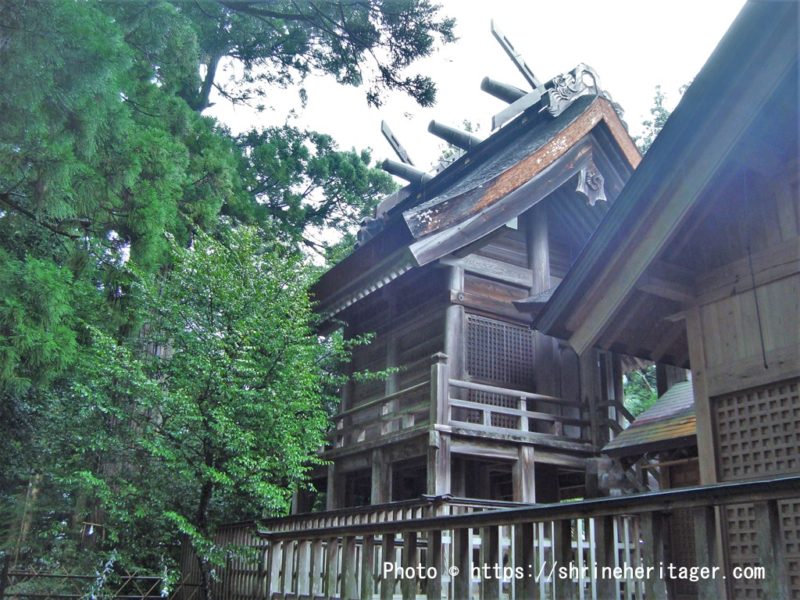
"The Land
of the End of Susanoo no Mikoto" "hai" (90-degree bow) at "Susa shrine"
